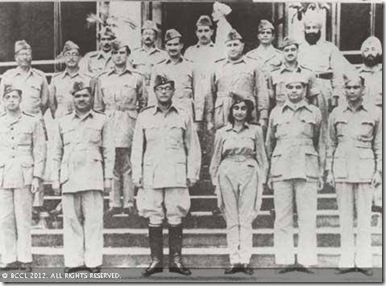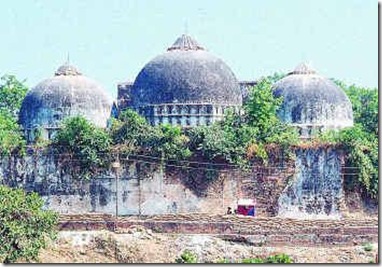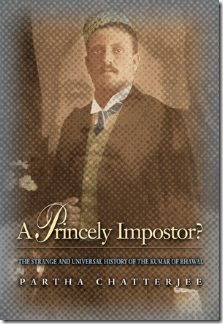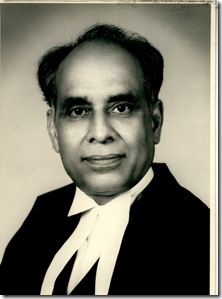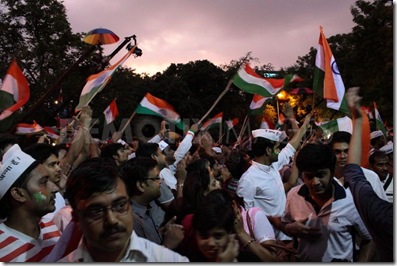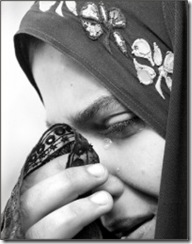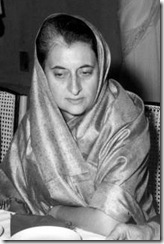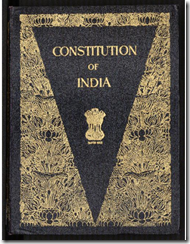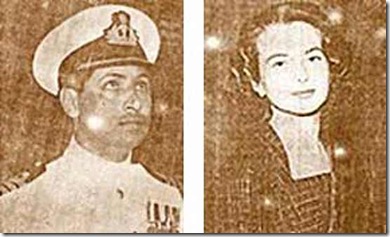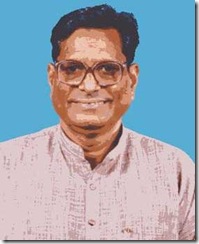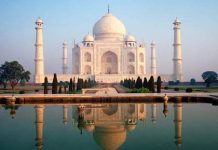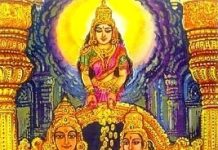India has the largest constitution in the world no doubt, but due to its complex nature, people have time and again found loopholes to come around. Here are Top 10 Most Interesting Indian Court Cases discussing such.
INA trials
Not many Indians are acquainted with this case, which had a profound impact on India’s freedom struggle. INA (Indian National Army) was a force that comprised of Indian Prisoners of War abroad, and was formed by Subhash Chandra Bose – to secure India’s independence from the British. When it was disbanded, INA’s top officers were tried by the British on charges of Sedition etc. Seeing that that there was a wave of sympathy throughout the country for these brave officers, the Indian National Congress decided to form a team of legal stalwarts to prepare a thorough legal defense for the officers. Such was the impact of this move, that Lord Wavell India’s then Viceroy, promulgated an ordinance with retrospective effect to confer jurisdiction on court-martials in cases related to PoW’s.
The pinnacle of this trial was the legal ingenuity demonstrated by Bhulabhai Desai. Desai’s primary argument was that Bose had formed a provisional government of India, and since the Axis powers had recognized that government, the officers of the INA were representing their country, and not a rebel force. Thus, Desai argued, the municipal law in this case, the IndianPenal Code was not applicable and they ought to be tried under International Law. He placed enormous evidence on record to establish that the INA was representing the Indian State; and thus, the officers were acting in furtherance of their duty as India and Great Britain were at war. Even though he lost the case, he earned his place in the pantheon of legends.
The Ayodhya Cases
One of the most controversial cases in Indian constitutional history is the Ayodhya case. In fact in one of the cases related to Ayodhya, one party was Shri Ram himself. Any way there are four principal title suits pending before the Lucknow bench of the Allahabad High Court over the disputed land at Ayodhya. The legal battle over the 80 feet by 40 feet land far predates the VHP movement to construct the Ram temple.
The first case was filed in January 1885 by Mahant Raghubir Das seeking permission to construct a temple on the chabutara (a raised platform) outside the Babri Masjid was dismissed. The mandir-masjid issue then remained in suspended animation until the night of December 22, 1949, when trespassers broke into the Babri Masjid and installed an idol of Ram. Subsequently, the city magistrate attached the premises. In the next 12 years, four title suits followed (all still pending before the courts). These include the one filed in December 1950 by Mahant Ramchandra Das Paramhans, who is now the chairman of the Ram Janmabhoomi Nyas and another by the Sunni Central Boards of Waqfs, UP, in December 1961. All the four suits were clubbed together and brought before the Allahabad High Court, which began recording oral evidence in July 1996.
The case has always moved at a snail’s pace. Out of the 100 witnesses, only 23 have testified till now. On an average, the examination of a witness takes a fortnight. Says former Delhi High Court chief justice Rajinder Sachar: “It is really impossible to find whether Ram was born on that exact piece of land. The matter will go on and on for years.”
The Union government on March 5 filed a petition before the Lucknow bench of the Allahabad High Court to expedite the case by holding daily hearings. Further, it suggested that the court appoint a commissioner or a judge to record the statements of the witnesses. But all this does not necessarily mean a speedy settlement of the issue. The case, fear legal experts, could be a long-drawn one.
Bhawal case – The Princely Imposter
The Bhawal Sanyasi case has been one of the strangest among judicial cases in British India. In the Hindu way of life, a Sanyasi is a person who has taken ‘Sanyas’, or entered the final stage of his life in which he is to seek the Truth and turn his back upon the material word. In more popular parlance, any garden-variety sadhu or mendicant may be called a sanyasi. Bhawal was a large zamindari near Dacca (now Dhaka, Bangladesh). It was, as with the case of many similar Zamindaries, closely supervised by the British bureaucracy. It had an Englishman as a manager. After the Zamindar died, it passed to his three sons. All led lives of ease. The second son, Ramendra, died in Darjeeling in 1905, apparently due to syphilis, and was believed to have been cremated. He left his widow, Bibhavati, behind him. Several years later, in 1921, a Sadhu appeared in Dacca. Soon people noticed many resemblances between him and the supposedly dead Ramendra. Jyotirmayee, one of his sisters was convinced that the sadhu was indeed her brother. Several educated Indians too were convinced of his identity. The British official world, on the other hand, looked upon him as a pretender. Bibhavati refused to accept him as her husband. The claimant (sadhu) claimed his 1/3rd share from the revenues of the zamindari. The Court of Wards which was administering the zamindari refused the claim and the matter went to the court. From the very beginning there was a clear division between the British officialdom and the Bengali elite, the latter siding with the claimant. The claimant filed a suit in 1930.
The judgment in the first trial went in favor of the claimant. The Court of Wards appealed to the Calcutta High Wards. After some delay caused by the Second World War, which kept one of assigned judges stranded in London, the High Court too found in favor of the claimant in 1940. Bibhavati appealed to the Privy Council in London. The Privy Council ruled in favor of the claimant on July 30, 1946. The judgment was telegraphed to Calcutta the next day.
That very day the winner/claimant went to the Kali temple to offer prayers upon his victory and suffered a stroke there. He died two days later, which, according to Bibhavti, was the divinely ordained punishment for the imposter.
ADM Jabalpur v Shivakant Shukla Case, 1976
ADM Jabalpur V Shivkant Shukla is one of the landmark cases in Indian constitutional history. Its judgment came on 28th April 1976. This day is known to be the blackest day of India’s constitutional history. Right to move to any court for enforcement of any right conferred by Articles 14, 21 and 22 was suspended during the emergency of 1975 by a presidential order. The maintainability of this order was challenged in this case. Several high courts held it not maintainable while Supreme Court’s 4 judges out of 5 declared otherwise and concluded it to be maintainable and valid exercise under emergency provisions of Indian constitution. Anybody who was sought to be a political threat was detained without trial and sent to prison under the MISA, a preventive detention act on the ground of maintaining the internal security in the country. This was case where an attorney general of India wrote, Even if life was taken away illegally, courts are helpless. For the disagreeing opinion, H. R. Khanna J lost his possibility of becoming the C.J. of India when he was the senior most person eligible for it. His Junior Beg J. became instead. P.N. Bhagwati J pleads guilty for the judgement of this case after 30 years. Now you see how politics influence the lives of common people devastatingly. This case has many strange, tempestuous facts and statements of judges. It was distrustful judgement, a holocaust to the fundamental rights of people in disguise.
Himmat Lal Shah v. Commissioner of Police, 1973
This case was recently referenced in the Anna Hazare anti-corruption movement when Section 144 of the IPC (unlawful assembly) was imposed by the Delhi Police and the lawyer team of Shanti and Prashant Bhushan argued successfully in the Supreme Court over theunconstitutional nature of this action. The original case dealt with a common citizen’s right to hold public meetings on streets and the extent to which the state could regulate this right. Freedom of expression and assembly is an essential element of democratic system. At the root of this system lies the citizens’ right to meet face to face to discuss problems social, religious or political. This right was upheld in this case.
The Shah Bano Case, 1985
Shah Bano, a 62 year old woman from Indore was divorced by her husband in 1978. Unable to support herself and her five children, she moved to courts to be granted maintenance from her ex-husband. Seven years and several judgments later, the Supreme Court ruled in favor of granting Shah Bano alimony. Largely seen as a threat to Sharia law by some Muslims, what followed a debate over the constitutionality of including different marriage and personal laws for different religion, and resulted in the passing of the Muslim Women (Protection of Rights on Divorce) Act, 1986, by the government.
The case was significant for several reasons. In giving its judgment, the Court ordered maintenance with an upper limit of Rs. 500 monthly, under Section 125 of the Code of Criminal Procedure, 1973, which applies to all citizens regardless of caste or religion. Although seen by many as a secular judgment, it invoked a strong reaction from the Muslim community, which felt that the judgment was an encroachment on Muslim Sharia law. The backlash from the Muslim community prompted the government to begin parliamentary procedures that, in essence, overturned the Supreme Court’s decision. The Muslim Women Act, 1986, was passed amidst great controversy and debate. Many argued that it was a way to appease the minority group that was threatening agitation.
Shah Bano’s case brought the need for a secular Uniform Civil Code into the limelight again. To date, however, individual Personal Laws based on religion are still in effect. The case remains a ground-breaking one in Indian divorce law and is often used as a benchmark by the courts.
State of Uttar Pradesh vs. Raj Narain, 1975
Ruling on the case that had been filed by the defeated opposition candidate Raj Narain, Justice Jagmohanlal Sinha declared then-PM Indira Gandhi guilty of electoral malpractices, invalidated her win from Rae Bareilly and barred her from holding elected office for six years. The decision caused a political storm in India that led to the imposition of a state of emergency by Indira’s government from 1975 to 1977. The decision had galvanized opposition parties and strikes by labour and trade unions, student unions and government unions swept across the country. Protests led by Jayaprakash Narayan and Morarji Desai flooded the streets of Delhi close to the Parliament building and the Prime Minister’s residence. The government argued that the political disorder was a threat to national security. Using the sweeping powers granted by the Emergency decree, thousands of opposition leaders and activists were arrested, press censorship was introduced and elections were postponed. During this period, Indira Gandhi’s Congress (R) used its parliamentary majority to amend the Indian Constitution and overwrite the law that she was later found guilty of violating.
Kesavananda Bharati vs State of Kerala, 1973
This case is now known as the case that saved the Indian democracy. On April 24, 1973, Chief Justice Sikri and 12 judges of the Supreme Court assembled to deliver the most important judgment in its history. The hard work that had gone into the preparation of this case was breathtaking. Literally hundreds of cases had been cited and the then Attorney-General had made a comparative chart analyzing the provisions of the Constitutions of 71 different countries. All this effort was to answer just one main question: “was the power of Parliament to amend the Constitution unlimited?” In other words, could Parliament alter, amend, abrogate any part of the Constitution even to the extent of taking away all fundamental rights? The judgment revealed a sharply divided court and, by a wafer-thin majority of 7-6, it was held that Parliament could amend any part of the Constitution so long as it did not alter or amend “the basic structure or essential features of the Constitution.” This was the inherent and implied limitation on the amending power of Parliament. This basic structure doctrine, as future events showed (Indira Gandhi attempting to hijack Indian democracy), saved Indian democracy and Kesavananda Bharati will always occupy a hallowed place in our constitutional history.
K. M. Nanavati vs State of Maharashtra, 1959
This was a high-profile upper class crime of passion, where Kawas Manekshaw Nanavati, a Naval Commander, was tried for the murder of Prem Ahuja, his wife’s lover. The incident received unprecedented media coverage and Nanavati was at the receiving end of a huge amount of public and community support. Nanavati was initially declared not guilty 8-1 by a jury, but the verdict was dismissed by the Bombay High Court on referral and the case was retried as a bench trial. Nanavati was convicted of culpable homicide and sentenced to life imprisonment. This case was the last to be heard as a jury trial in India, as the government abolished jury trials as a result of the case. Many see this as a progressive step in our justice system as decisions of juries are often colored by societal values and norms. On the side note, Ram Jethmalani, now a prominent lawyer and BJP politician, conducted the prosecution in what was one of his first high-profile cases.
Lal Bihari, The Undead Indian
In 1976, when a teenager named Lal Bihari approached a bank to approve a loan, he was informed that he was actually dead. It took Lal Bihari 18 years to get his life and his land back. During that time, he added the word Mritak or Dead, to his name and to prove that he was alive sought arrest, tried to run for parliament, kidnapped the son of his uncle, who had stolen his property, threatened murder, insulted judges, threw leaflets listing his complaints at legislators in the state assembly and demanded a widow’s pension for his wife. Each time he was either beaten up by police or rebuked for wasting officials’ time. Unable to make headway, Lal Bihari, The Dead sought the company of other ghosts in Uttar Pradesh and found an entire underworld of the deceased and dispossessed. It was only in 1994, 18 years after being declared dead, that Azamgarh district magistrate, a Hausla Prasad Verma, declared Lal Bihari finally alive once again and also returned his land to him.

















